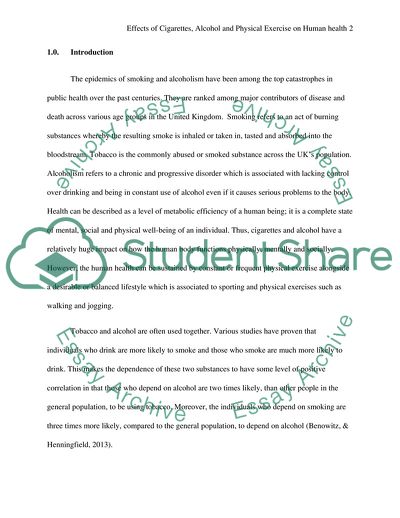Cite this document
(Effects of Cigarettes, Alcohol, and Physical Exercise on Human Health Research Paper Example | Topics and Well Written Essays - 3500 words, n.d.)
Effects of Cigarettes, Alcohol, and Physical Exercise on Human Health Research Paper Example | Topics and Well Written Essays - 3500 words. https://studentshare.org/health-sciences-medicine/1863102-eco-5002y
Effects of Cigarettes, Alcohol, and Physical Exercise on Human Health Research Paper Example | Topics and Well Written Essays - 3500 words. https://studentshare.org/health-sciences-medicine/1863102-eco-5002y
(Effects of Cigarettes, Alcohol, and Physical Exercise on Human Health Research Paper Example | Topics and Well Written Essays - 3500 Words)
Effects of Cigarettes, Alcohol, and Physical Exercise on Human Health Research Paper Example | Topics and Well Written Essays - 3500 Words. https://studentshare.org/health-sciences-medicine/1863102-eco-5002y.
Effects of Cigarettes, Alcohol, and Physical Exercise on Human Health Research Paper Example | Topics and Well Written Essays - 3500 Words. https://studentshare.org/health-sciences-medicine/1863102-eco-5002y.
“Effects of Cigarettes, Alcohol, and Physical Exercise on Human Health Research Paper Example | Topics and Well Written Essays - 3500 Words”. https://studentshare.org/health-sciences-medicine/1863102-eco-5002y.


